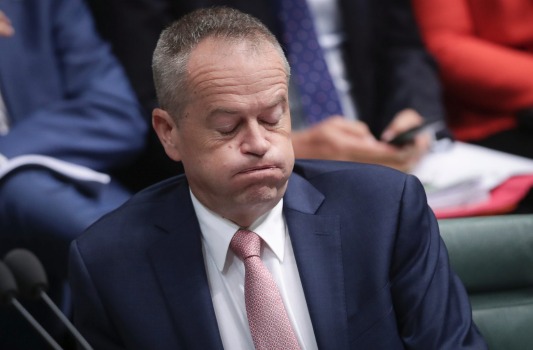
How Franking Credits are Created:
In simple terms, imagine an Australian company makes a $100 profit. It pays $30 tax on it and pays a $70 cash dividend to its one shareholder, an Australian resident. The shareholder also receives a tax credit for the $30. As a result, the shareholder declares $100 in income in their tax return. That $100 is added to the rest of their income. If the total income they have is too low to be taxable, the shareholder gets a refund in their bank account, of the $30 in tax that the company paid.
How Franking Credits Work in Superannuation:
When the shares are owned by a Self-Managed Superannuation Fund (SMSF), the fund member is over 60 years of age, and the member’s account is in pension phase, then no tax is payable by the fund on that income. Just like the example above, the franking credits are refunded. Also, when the fund member receives income from the SMSF, it is not considered taxable, so this helps them keep their income outside of superannuation under the tax-free threshold. This means that they may also qualify for a refund of franking credits on any shares they hold outside of superannuation, despite having a very good effective income overall.
As you can see, having money in superannuation in pension phase is a huge tax benefit. How much people could keep in their super fund used to be unlimited. Slowly, over the years, these tax advantages have been reduced. Most recently, only starting 1 July 2017, a cap of $1.6m was set on the amount of money that can be held in pension phase; and this includes money loaned to the fund. That $1.6m balance can still earn tax-free income, the tax saved, if you have the full $1.6mil is roughly equivalent to the age pension. So self-supporting retirees with their money in superannuation are not really saving the country money on pensions at all, some are costing us more than the pension, in lost taxes. Another unfortunate thing about superannuation concessions is that people with less than $1.6mil in super, but who do not qualify for the government age pension, get less out of the tax system then those wealthier than them.
Now the tax benefit from this $1.6m cap has yet to flow through to the government’s coffers; it won’t effectively start until tax returns are lodged after 30 June 2018. Any funds with member balances above $1.6m each, which were previously held in pension phase, are required to be transferred to accumulation phase. Here their earnings will be taxed at 15%. As it is unusual for all the income of a SMSF to be fully franked, funds held in accumulation stage will probably utilise their franking credits.
Pensioners:
According to the Shadow Treasurer Chris Bowen, there are 214,000 age pensioners who will lose their franking credits. These are people the system, by means other than the measurement of tax law, are considered poor enough to qualify for government assistance. The Centrelink rules strip bare any tax concessions when considering qualification for a pension, so there is no way these 214,000 people meet the description of wealthy.
Further, any assets they have over and above the family home are deemed to be earning a set amount of income, regardless of how much income is actually earned from the investment. This will mean that even though these pensioners may have their non-pension income reduced by up to 30% their pension payments will not increase to compensate. This will be a devastating blow to their household budget. They would have thought they had enough to retire on, and now it is too difficult for most of them to get back into the workforce.
There are many ways these pensioners could have acquired these shares; possibly a main source are their retirement savings. Other sources could be demutualisation of health funds and AMP. The shares may be from their employer in an employee share acquisition scheme. Also a favourite of the average worker was the Telstra listing.
What’s Really Going On:
Due to the large amount of tax free income people over 60 receive from their superannuation, not a lot of tax is collected from wealthy senior Australians. This is the case whether they receive their income from franked dividends or any other method. This is the real problem pure and simple. The 214,000 pensioners that the removal of franking credits will affect are not so significant to the budget bottom line, but those franking credits mean a lot to those pensioners.
The current policy of not taxing company profits twice – once in the company’s hands and again in the hands of the shareholder – means that effectively no tax at all is paid on company profits that flow through to people who do not earn enough to pay tax, or are over 60 receiving their income through superannuation.
Consider the situation where a low-income taxpayer or superannuant earned their income from overseas companies, property trusts, direct property or interests, instead of Australian companies that pay tax in Australia which can then distribute franking credits. All these other income streams would be paid to the investor before the ATO gets a chance to tax it on the trading entity. As discussed above, as the investor is not liable for tax then the tax would never be paid on profits received from these other entities. It is the refund of franking credits that levels the playing field, not a “tax lurk”.
Needless to say, profitable investments (including investments in residential rental properties) that are not Australian tax paying companies will now be more attractive. There will be the classic market distortion that happens when investment strategies let tax considerations (bottom line return) override the allocation of resources to the best performing businesses, and that is not good for the economy overall. The over 60s will still have a method of investing that gives them tax free returns but tax paying Australian companies will lose investors.
Conclusion – With Attitude – Been Good Till Now
A blanket ‘no refund of franking credits’ policy will hurt at least 214,000 Australians unjustifiably, and redirect investment dollars to more investments where the profits are not taxed before being paid to investors, creating a market distortion. Further, this policy has no effect at all on the wealthy because they can still utilise their franking credits to pay the tax on their other income. It can only hurt those low-income earners measured by the system to not earn enough income to have to pay tax.
The real problem is the large amount of wealthy people over 60 who are not contributing to the tax system, mainly because of the very generous superannuation tax rates. The solution that goes back to the underlying principle of our tax system – ability to pay, is to increase the tax on income earned inside of superannuation.
This is a direct hit at the problem unlike denying franking credit refunds which will simply move money away from being invested in taxpaying Australian companies and hit the poor relatively harder than the rich. Denying franking credit refunds is an arbitrary, complex and only partial solution to the very basic problem of too many tax concessions within superannuation.
The mistake Howard made was not the allowance of franking credit refunds, that was a good move, it removed a market distortion. Howard’s mistake was allowing people over 60 to no longer pay tax on their superannuation income no matter how wealthy and for that matter why should the wealthy only pay 15% tax on their superannuation investments. We need to get back to measuring ability to pay.
 Julia's Blog
Julia's Blog